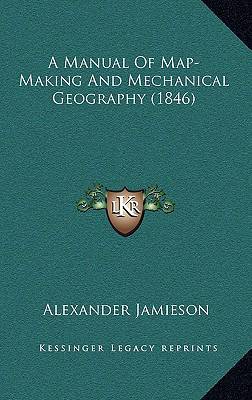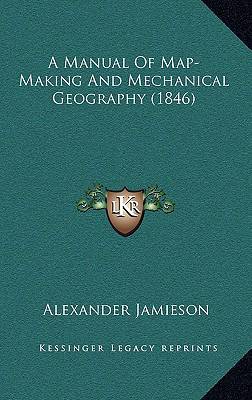
- Afhalen na 1 uur in een winkel met voorraad
- Gratis thuislevering in België vanaf € 30
- Ruim aanbod met 7 miljoen producten
- Afhalen na 1 uur in een winkel met voorraad
- Gratis thuislevering in België vanaf € 30
- Ruim aanbod met 7 miljoen producten
Zoeken
€ 50,45
+ 100 punten
Uitvoering
Omschrijving
A Manual of Map-Making and Mechanical Geography is a comprehensive guidebook written by Alexander Jamieson in 1846. The book provides detailed instructions on how to create maps, including the use of various instruments and techniques. It also includes information on the principles of mechanical geography, which involves the study of the physical features of the earth and their effects on human activities. The manual is divided into several sections, each covering a different aspect of map-making and geography. The first section provides an overview of the history of cartography and the different types of maps that exist. The second section covers the various tools and instruments used in map-making, such as the compass, protractor, and scale. The third section of the book delves into the principles of mechanical geography, including the study of the earth's surface, climate, and natural resources. The fourth section provides detailed instructions on how to create different types of maps, such as topographical maps and nautical charts. Throughout the book, Jamieson provides numerous diagrams and illustrations to help readers understand the concepts and techniques discussed. The manual is written in a clear and concise style, making it accessible to both novice and experienced cartographers. Overall, A Manual of Map-Making and Mechanical Geography is an essential reference book for anyone interested in the art and science of cartography. It provides a wealth of information on the tools, techniques, and principles of map-making and mechanical geography, making it an invaluable resource for students and professionals alike.This scarce antiquarian book is a facsimile reprint of the old original and may contain some imperfections such as library marks and notations. Because we believe this work is culturally important, we have made it available as part of our commitment for protecting, preserving, and promoting the world's literature in affordable, high quality, modern editions, that are true to their original work.
Specificaties
Betrokkenen
- Auteur(s):
- Uitgeverij:
Inhoud
- Aantal bladzijden:
- 116
- Taal:
- Engels
Eigenschappen
- Productcode (EAN):
- 9781165954544
- Verschijningsdatum:
- 10/09/2010
- Uitvoering:
- Hardcover
- Formaat:
- Genaaid
- Afmetingen:
- 152 mm x 229 mm
- Gewicht:
- 344 g

Alleen bij Standaard Boekhandel
+ 100 punten op je klantenkaart van Standaard Boekhandel
Beoordelingen
We publiceren alleen reviews die voldoen aan de voorwaarden voor reviews. Bekijk onze voorwaarden voor reviews.











